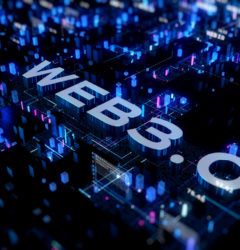23 May

Web development and software development solutions are evolving with each passing year. Not only is the approach to development itself changing, but so are the different elements of technology that developers work with. Whether it’s programming languages, frameworks, analysis tools, architectures or databases, choosing the right ones and combining them into one compact package is crucial to the entire development process.
What is tech-stack?
As the introduction suggests, tech-stack can be described as a set of software solutions, frameworks, programming languages, databases, libraries, and other tools that are needed to create a software application. The tech-stack contains the necessary parts not only for front-end but also for back-end development.
Choosing the right tech-stack is a crucial step. Several factors need to be taken into account, namely:
- The purpose of the application: What functionalities and requirements will the proposed solution have? In other words, how complex and complicated a solution are we going to create?
- Scaling and maintenance: How often will the project be manipulated with and how difficult will the maintenance or iterations be?
- Security and stability: How much strain will the solution put on the entire system and databases, and will the processing speed of all tasks be satisfactory?
- Support and community: As a rule of thumb, the most widely used tech-stacks have a strong community behind them, which will help you find solutions to your problems.
- Team: It is important that your IT team has experience with these tools. Expanding your IT team or custom development can also be a solution in order to ensure that your options of the most suitable tech-stack are not limited.
The result of making the right choice
The tech-stack you opt for can have a major impact on the entire lifecycle of the solution you develop. It’s not just about the application development process itself, but also about the future of its use.
The right tech-stack can have a significant impact on your business in the long run.
Simplicity of use, the quality of the final product, the performance of the solution, and most importantly, the cost of managing and maintaining it – these are just a few of the attributes that are affected by the choice of tech-stack itself.
7 most suitable tech-stacks
At first glance, it may seem challenging to choose the right ecosystem. While it is true that such a decision should be made by a team that has years of experience, there are several tech-stacks that have already been tried and tested by the global developer community.
The following 7 tech-stacks are dominating software development in 2023.
1. MEAN Stack
This popular tech-stack is a free but comprehensive open-source JavaScript package that includes MongoDB, Express.js, AngularJS, and Node.js components. The benefit is that you use one JavaScript language across the entire package, so your team doesn’t have to work with multiple languages at once. This makes it easier to write, test, deploy, maintain, and scale your applications. This solution is flexible and easy to use.
Created with MEAN Stack: YouTube
2. MERN Stack
It’s basically a similar tech-stack to MEAN, but with AngularJS being replaced by React. This package is suitable for creating dynamic web interfaces. It also has the advantage of forming reusable components, as well as efficient and fast updates of user interfaces.
The creation of appealing user interfaces is its main added value. At the same time, it should be noted that React has limited functionality, as it is a library and not a standalone framework.
Created with MERN Stack: Netflix
3. MEVN Stack
Once again, this tech-stack includes MongoDB, Express.js, and Node.js. However, it uses the progressive JavaScript framework Vue to create user interfaces. The advantage is the creation of robust and scalable web applications that require real-time data flow and UI dynamics.
Again, it also allows a single programming language to be used across the entire package. There is also added value in rapid deployment and integration with third-party cloud platforms such as AWS, Google Cloud or Microsoft Azure.
4. LAMP Stack
This tech-stack uses four main components – the open-source Linux operating system, the Apache web server, the well-known MySQL database system, and the PHP programming language. The advantage of LAMP lies in its simplicity alongside its low cost.
It offers the ability to create dynamic and interactive web solutions that are easy to scale and maintain. However, this tech-stack is more suitable for less complex projects by small and medium-sized businesses or novice web developers.
Created with LAMP Stack: Slack
5. Serverless Stack
This is a new trend in software development whereby you don’t have to worry about infrastructure and server management. This is because you build your solution using cloud infrastructure via services such as AWS Lambda, Google Cloud Functions or Azure Functions.
You separate the application into smaller, individual units and the functions are only triggered when the user executes the function. In short, this means that you don’t need to pay for unused server resources because scaling is based on the amount of user requests. This tech-stack is only suitable for certain types of applications.
Created with Serverless Stack: Figma
6. Flutter for Web
Flutter for Web is truly unique in cross-platform development. It is the ideal solution if you want to create apps for web and mobile use simultaneously, which are also visually appealing, high-performing and responsive. This tech-stack shares code across apps, making development faster and more efficient.
It also features an intuitive user interface and allows you to use pre-built widgets to make the whole process a little bit easier. Equally revolutionary is the feature that allows developers to see changes in the code in real time.
Created with Serverless Stack: Alibaba
7. Ruby on Rails
This tech-stack is built using the Ruby programming language and the Rails framework. As an open-source web development stack, it provides a comprehensive set of tools to simplify complex development workflows.
It is dynamic and supports JavaScript, HTML and CSS. Its main advantage is its modularity, which allows developers to add or remove components as needed. This saves time, both during code creation and during maintenance.
Created with Ruby on Rails Stack: Airbnb
Need advice?
If you are considering which tech-stack to choose when developing your planned projects, feel free to contact us and arrange a consultation so that we can help you with your selection. If you want to work with the latest technology, you can expand your IT team to include our dedicated experts, who have extensive experience in this field.
However, if you would prefer to entrust the entire project in the hands of experts, then custom development is the best option for you. This way, you can outsource the entire project to us while you focus on important business decisions.







